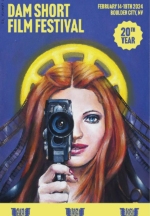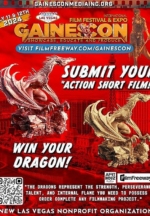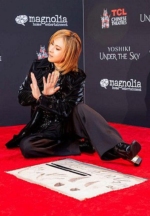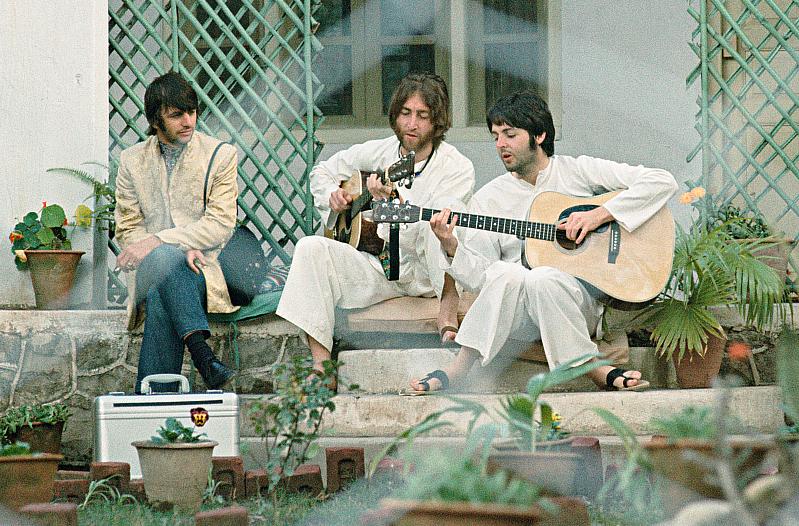
With new and vivid first-hand details and over 40 personal photos never-before-seen in any other movie about The Beatles, Emmy Award-winning Canadian filmmaker Paul Saltzman shares an extraordinary life experience in a new feature documentary, Meeting the Beatles in India. Gathr Films has set Wednesday, September 9th for the virtual World Premiere with a Live Filmmaker Q&A directly following on its Gathr At Home platform. The film will then be available virtually through art house film platforms around the world.
Trailer Launch HERE.
Saltzman learned transcendental meditation while spending a week in 1968 at the Maharishi Mahesh Yogi’s ashram in Rishikesh on the banks of the Ganges River along with John Lennon, Paul McCartney, George Harrison and Ringo Starr. Photos and recollections not revisited for 50 years are brought to life. Narrated by Oscar® winner Morgan Freeman with executive producers including Pen Densham and David Lynch, Meeting the Beatles in India adds vital details and context to one of the seminal cultural events of the 20th Century.
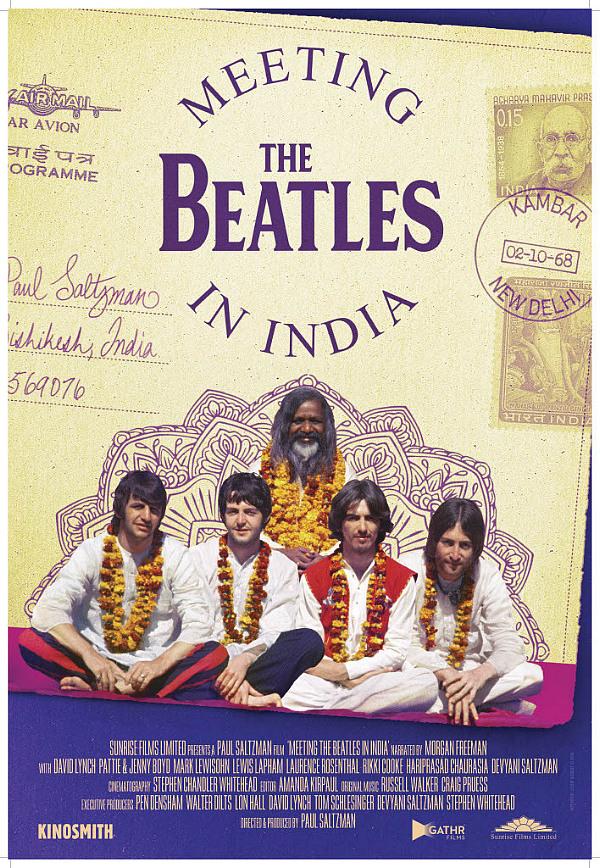
In 1968 Paul Saltzman, then 23-years-old, traveled to India to heal his broken heart. There he discovered his own soul, learned Transcendental Meditation (which changed his life) and hung out with John, Paul, George and Ringo. Among the other seekers at the ashram were actress Mia Farrow, Mike Love of the Beach Boys, folksinger Donovan and the Beatles’ wives and girlfriends.
In Meeting the Beatles in India, Saltzman provides a trove of new information and additional context:
- Includes over 40 of Saltzman’s photos from the ashram never included in any television or film account of The Beatles’ time in India.
- Gives the back story on how his iconic group photo of the Beatles, the Maharishi and their celebrity friends at the ashram (used in the film’s poster) actually happened.
- Gives Saltzman’s first-hand account of The Beatles songwriting process. Experts estimate between 30 to 48 songs were written during this period with many included on the White Album. The list includes: Back in the USSR, Happiness is a Warm Gun, Dear Prudence, Ob-La-Di, Ob-La Da, Blackbird, Rocky Raccoon, Birthday, Sexy Sadie, Don’t Pass Me By, Mother Nature’s Son, Helter Skelter, Revolution and Bungalow Bill, among many others.
- Finds the real “Bungalow Bill” in Hawaii for his first ever on-camera interview during which he talks about his reaction to the infamous lyrics “Hey Bungalow Bill, what did you kill, Bungalow Bill.”
- Shows the actual spot at the ashram where Paul and John first sang Dear Prudence for one of their group, Prudence Farrow, sister of Mia Farrow, who was most devoted to her daily meditations…so much so that the group worried for her well-being.
- Gives further context to the estrangement that occurred between The Beatles and Maharishi Mahesh Yogi and led to the band’s abrupt departure from the ashram.
- Reflects on filmmaker David Lynch’ own inner journey and the link between TM and creative output. In 2005, he founded the David Lynch Foundation Center for Health and Wellness to ensure that children around the world have access to TM.
- Adds color to this most prolific time in the Beatles’ creative lives during a visit back to the ashram, now dubbed The Beatles Ashram, with noted Beatles historian Mark Lewisohn.
- Visits the Beatles Story museum in Liverpool to talk to George Harrison’s ex-wife Pattie Boyd and ex-sister-in-law Jenny Boyd, both of whom were in India with The Beatles in 1968.
- Guided by his vivid and riveting personal memories, Saltzman shares his own magical mystery tour of one of the most important and influential cultural events of the 20th Century and reveals how vital the exploration of one’s own inner self is, not only for artists of all generations, but for all of us.
- According to Stephen Maycock, a world-renowned music memorabilia expert who headed Sotheby’s Rock ‘n’ Roll division for 13 years and was consultant to Bonhams for 16 years, “Paul’s [Saltzman] photos are some of the very best we have of The Beatles.”
“In 1968, at the age of 23 and reeling from the pain of a lost love, I travelled to India, learned meditation, hung out with the Beatles for a week at an ashram on the banks of the Ganges river, and captured that experience in photographs,” recalls Saltzman. “Three decades later, I found the photographs in my basement, and now I am honored to share this magical episode of my life with audiences around the world.”
How Saltzman came to share the magical mystery tour in India with The Beatles and other celebrities is hard to believe but completely true. An inner voice drove him to make the pilgrimage to India and to eventually stand outside the gates of the Maharishi Mahesh Yogi’s ashram in Rishikesh. At first rebuffed, he camped outside the ashram’s gates for eight days before being allowed in to learn transcendental meditation.
His first encounter with The Beatles was as momentous to his future life as it was casual. He came upon a table on the ashram’s grounds at which sat The Beatles and their party. Met with a generosity of spirit and great humor, Saltzman was drawn into the Beatles orbit for a week and his recollections of them as well as the life-changing practice of Transcendental Meditation were to shape the rest of his life. One conversation with George Harrison was particularly insightful, according to Saltzman. “George said ‘Like, we’re The Beatles after all, aren’t we? We have all the money you could ever dream of. We have all the fame you could ever wish for. But it isn’t love. It isn’t health. It isn’t peace inside, is it?’”
On another occasion, it was John Lennon’s words about the enduring power of love that comforted the 23-year-old’s recently heartbroken heart. “The really great thing about love is you always get another chance,” Lennon told him. A few weeks later he would make his love affair with Yoko Ono public for the first time.
Oscar®-winning filmmaker David Lynch, who is among the Executive Producers on Meeting the Beatles in India, started his David Lynch Foundation to promote the healing and restorative power of TM to change and heal lives.
“I started my practice of Transcendental Meditation in 1973,” says Lynch, “but I had no idea how powerful and profound this technique could be until I saw firsthand how it was being practiced by young children in inner-city schools, veterans who suffer the living hell of post-traumatic stress and women and girls who are victims of terrible violence. TM is, in a word, life-changing for the good. In 2005, we started the David Lynch Foundation for Consciousness-Based Education and World Peace to ensure that every child anywhere in the world who wanted to learn to meditate could do so. Now, the Foundation is actively teaching TM to adults and children in countries everywhere.”
Many have noted, including Lynch, the connective tissue between the practice of Transcendental Mediation and creativity. That certainly was the case with the Beatles during their time in India. As Beatles historian Mark Lewisohn says in the film, “They had nothing else to do at the ashram besides mediate and write music.”
